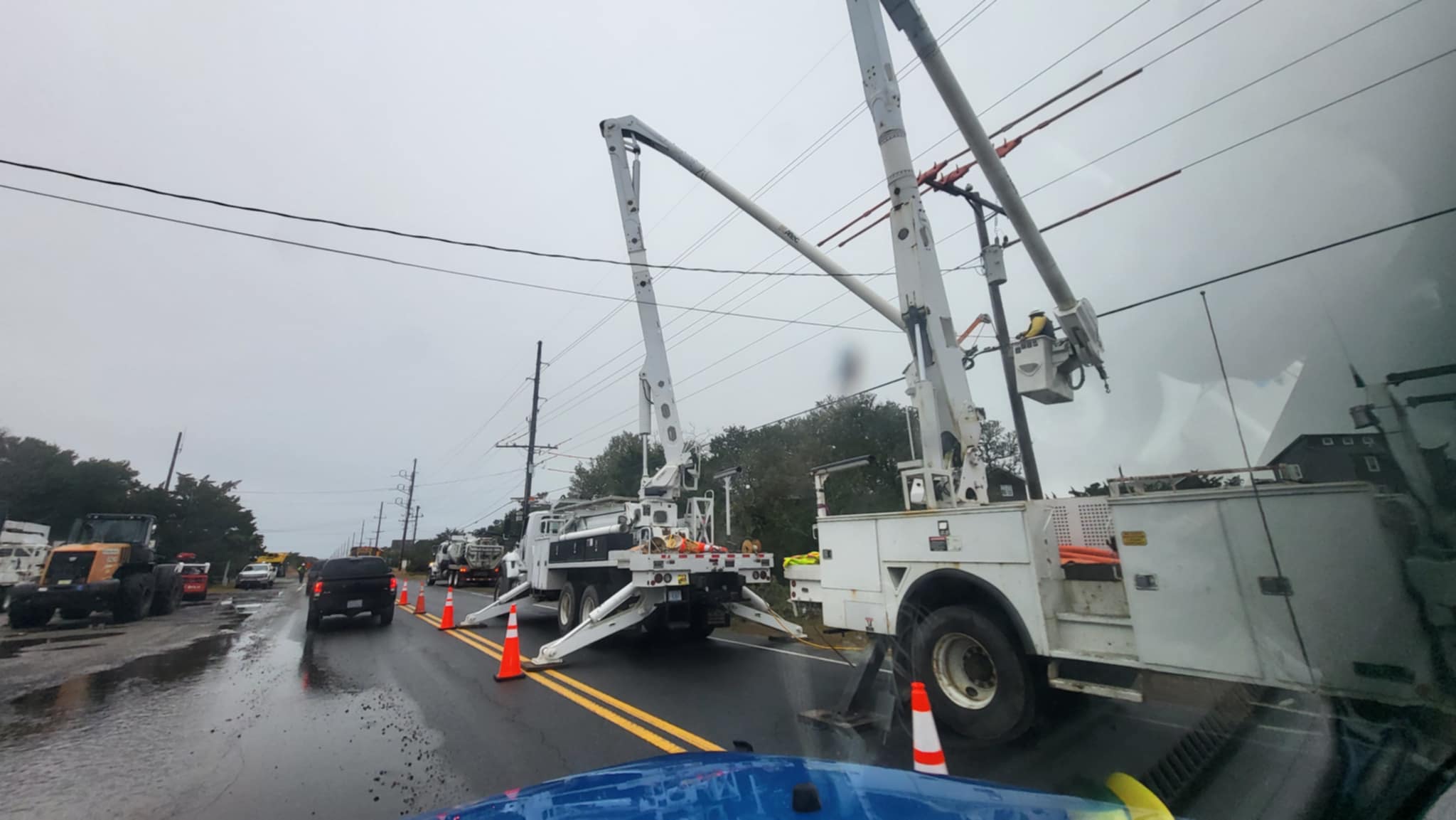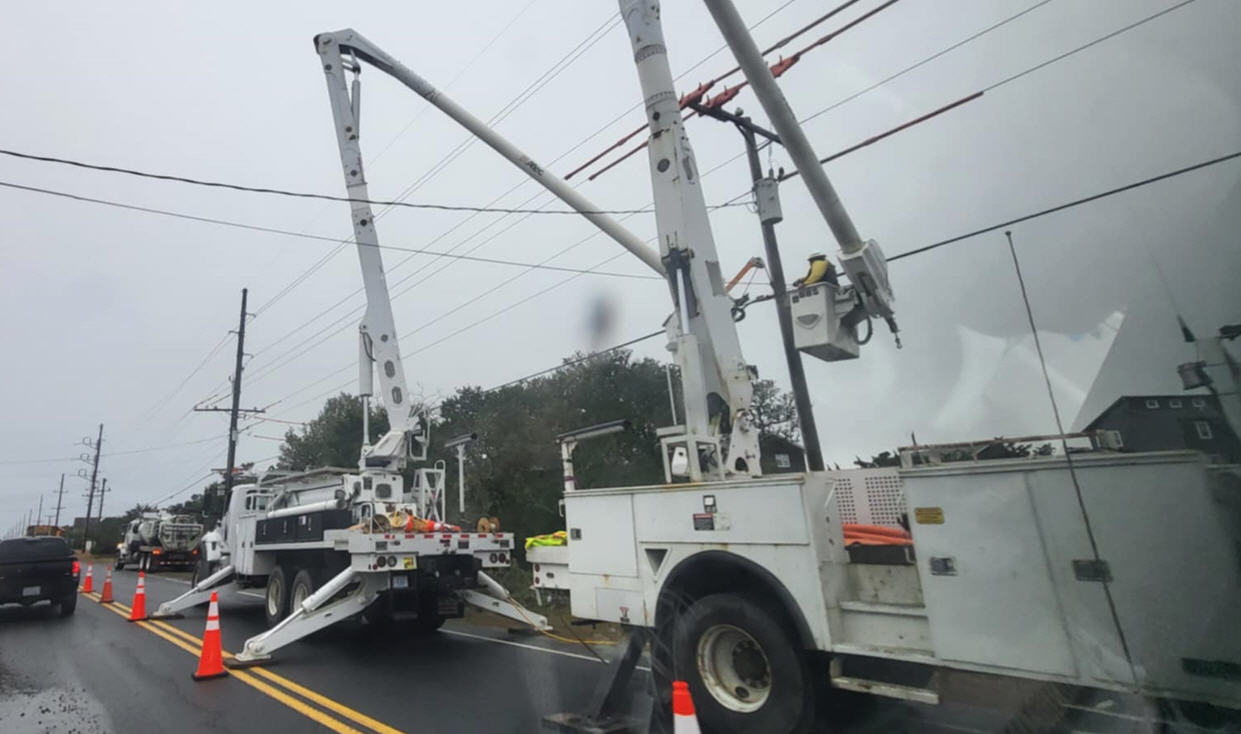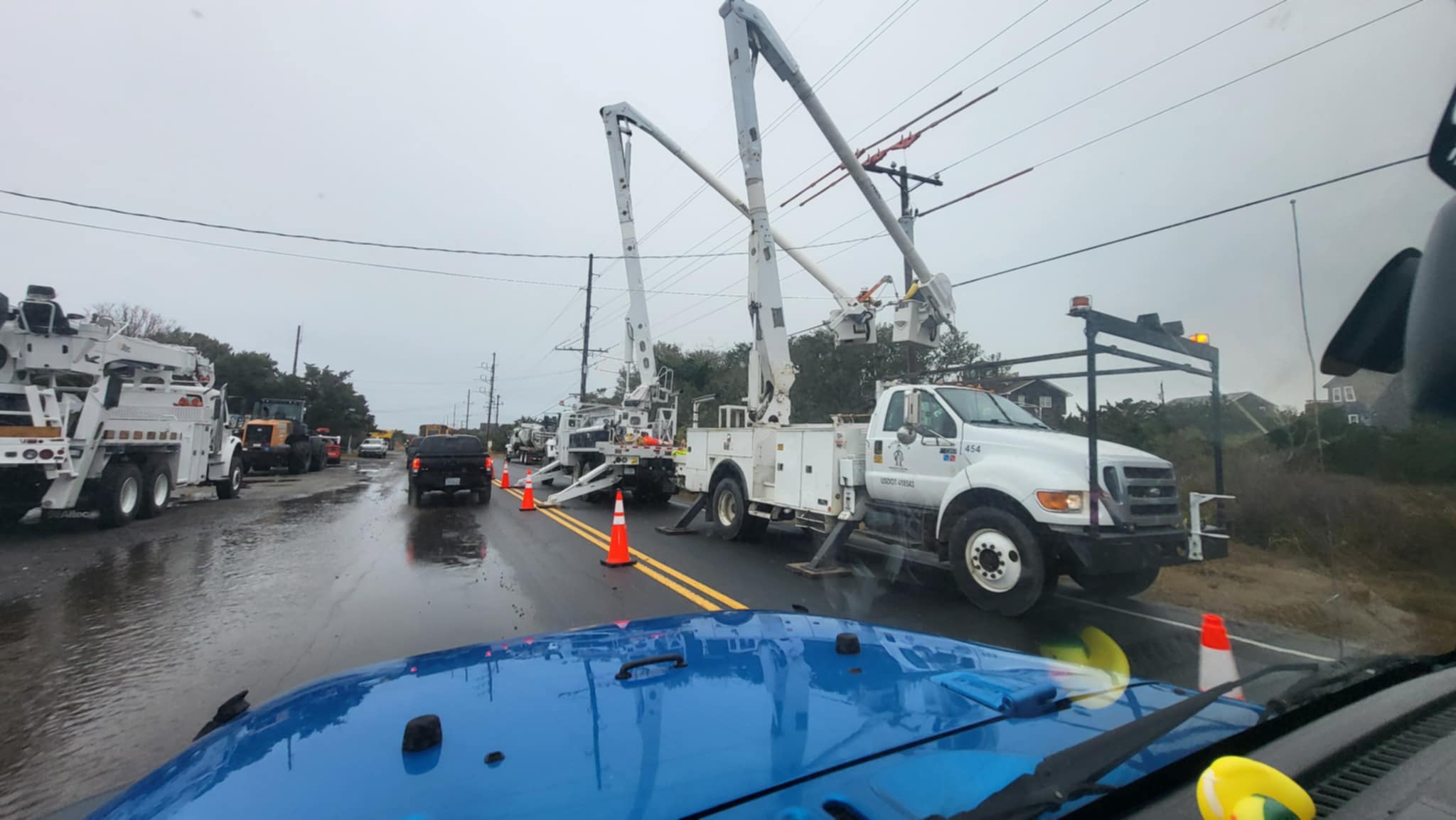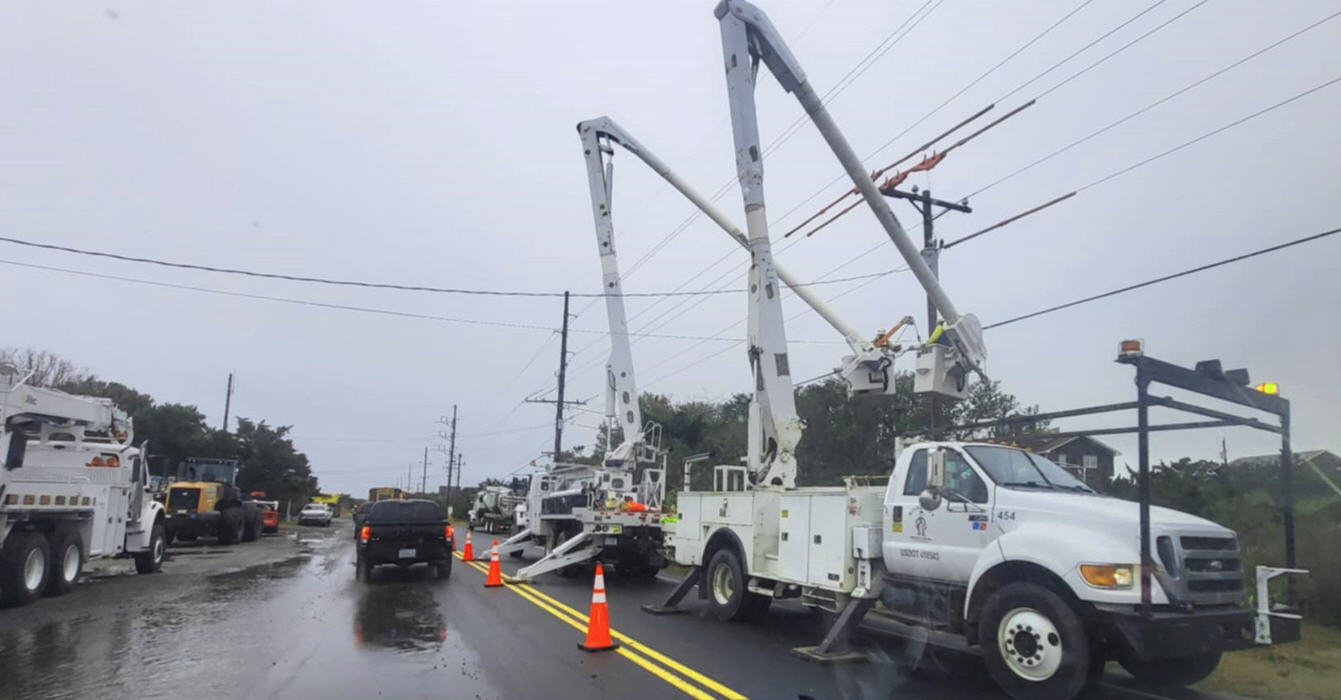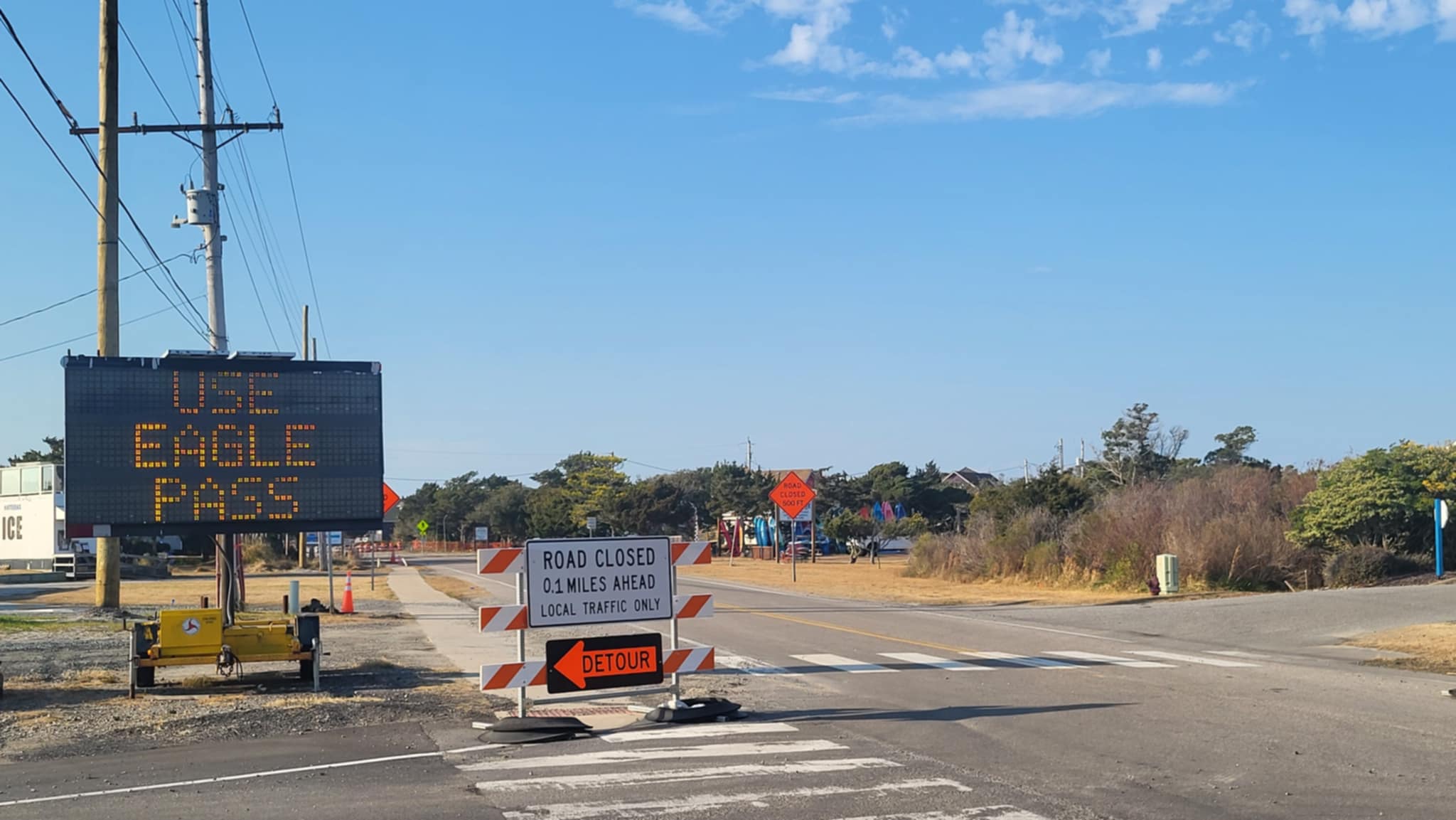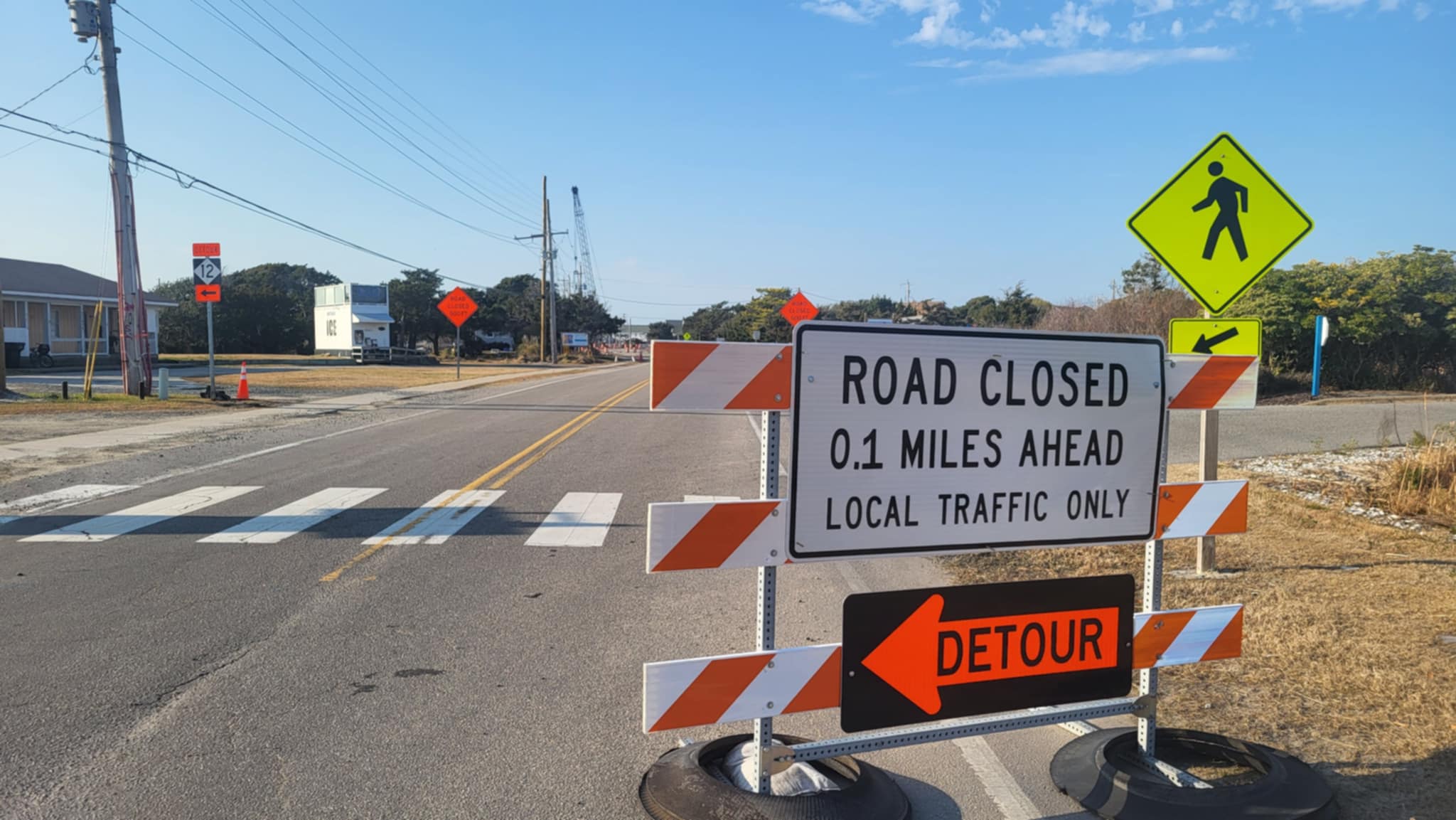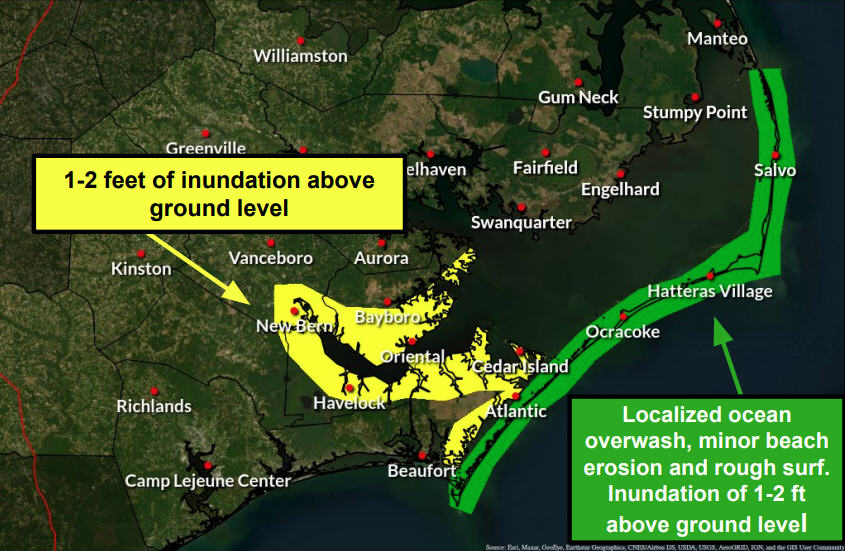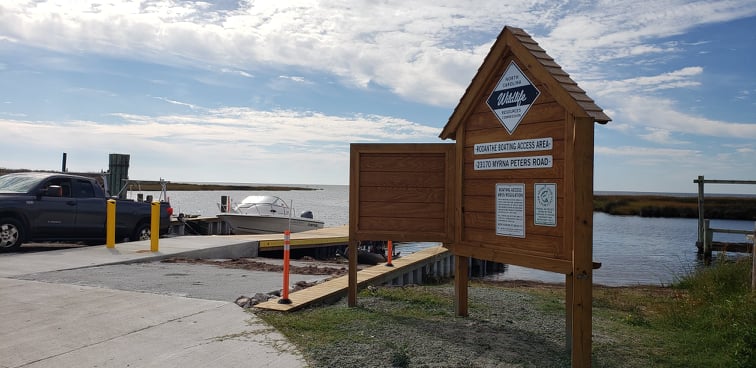And, finally, to the maximum extent possible, the secretary must designate pedestrian and vehicle corridors of minimal distance around any additional restricted areas to allow access to areas that are not closed. In December 2005, the NPS began the negotiation process to create regulations that would allow the seashore to meet its compliance standards, and in June 2007, an Interim Management Strategy was implemented to provide a framework for regulating the seashore while the NPS developed its long-term plan. This Interim Management Strategy allowed for controlled ORV access to the beaches. However, on July 17, 2007, an injunction was filed by the Defenders of Wildlife and the National Audubon Society to prevent ORV use until a final management plan was established and approved by NPS. A settlement negotiation process ensued, and on April 30, 2008, a federal judge approved a consent decree that required all seashore ramps to be closed to ORVs from 10 p.m. until 6 a.m., created buffers for nests and chicks that are clearly defined and in some cases more restrictive, and ruled that deliberate violations of the buffers would result in an expanded restricted area. In February 2012, the NPS implemented final rules, requiring that ORVs must obtain permits to access the seashore, further limiting the accessibility of the park to vehicles. FOR MORE INFORMATION Click here to read the Senate bill, The Preserving Public Access to the Cape Hatteras Beaches Act. The Interim Protected Species Management Strategy is available on the park planning website at http://parkplanning.nps.gov/document.cfm?parkID=358&projectID=13331&documentID=19796
Burr and Hagan introduce bill in Senate to overturn final ORV plan
By IRENE NOLAN
By IRENE NOLAN
By IRENE NOLAN
U.S. Sens. Richard Burr, R.-N.C., and Kay Hagan, D-N.C., today introduced in the Senate the Preserving Public Access to Cape Hatteras Beaches Act, a bill that would overturn the National Park Service’s final off-road vehicle plan and reinstate the Interim Management Strategy governing vehicle use on Cape Hatteras National Seashore.
The reinstatement of the original Interim Management Strategy, issued by the National Park Service on June 13, 2007, would set aside current mandates and requirements that were put in place in the wake of a consent decree filed in the U.S. District Court for the Eastern District of North Carolina that prevent ORV and citizen access to a significant portion of this Seashore.
The Senate bill is identical to a bill introduced in the House on Feb. 28 by U.S. Rep. Walter B. Jones, R.-N.C.
That bill, H.R. 4094, is scheduled for a hearing tomorrow morning before the House Subcommittee on National Parks, Forests, and Public Lands.
“Restricting ORV use on the Cape Hatteras National Seashore has a negative impact on local communities and the local economy,” Burr said. “We must ensure that our state’s residents have access to North Carolina’s scenic treasures, and I am confident we can come to a compromise that allows people to have access while at the same time addressing any potential environmental concerns.”
“While I fully support efforts to protect all of North Carolina’s coastlines, I believe the final ORV rule issued by the Park Service in January 2012 did not strike the necessary balance between protecting the environment and the needs of the local community,” said Hagan. “As Dare County continues to recover from the damages caused by Hurricane Irene, it is critical that residents and visitors have access to the Cape Hatteras National Seashore.”
If this bill is enacted, the National Park Service’s Interim Management Strategy will go into effect immediately and end upon the National Park Service establishing a new long-term off-road vehicle management plan that meets the requirements set forth in the legislation.
The legislation specifies that the Secretary of the Department of the Interior cannot impose additional restrictions on pedestrian or motorized access to the seashore other than those specified in the interim strategy or specifically authorized by the legislation.
Any additional restrictions, the bill says, must be based on peer-reviewed science and be open to public comment.
U.S. Sens. Richard Burr, R.-N.C., and Kay Hagan, D-N.C., today introduced in the Senate the Preserving Public Access to Cape Hatteras Beaches Act, a bill that would overturn the National Park Service’s final off-road vehicle plan and reinstate the Interim Management Strategy governing vehicle use on Cape Hatteras National Seashore.
The reinstatement of the original Interim Management Strategy, issued by the National Park Service on June 13, 2007, would set aside current mandates and requirements that were put in place in the wake of a consent decree filed in the U.S. District Court for the Eastern District of North Carolina that prevent ORV and citizen access to a significant portion of this Seashore.
The Senate bill is identical to a bill introduced in the House on Feb. 28 by U.S. Rep. Walter B. Jones, R.-N.C.
That bill, H.R. 4094, is scheduled for a hearing tomorrow morning before the House Subcommittee on National Parks, Forests, and Public Lands.
“Restricting ORV use on the Cape Hatteras National Seashore has a negative impact on local communities and the local economy,” Burr said. “We must ensure that our state’s residents have access to North Carolina’s scenic treasures, and I am confident we can come to a compromise that allows people to have access while at the same time addressing any potential environmental concerns.”
“While I fully support efforts to protect all of North Carolina’s coastlines, I believe the final ORV rule issued by the Park Service in January 2012 did not strike the necessary balance between protecting the environment and the needs of the local community,” said Hagan. “As Dare County continues to recover from the damages caused by Hurricane Irene, it is critical that residents and visitors have access to the Cape Hatteras National Seashore.”
If this bill is enacted, the National Park Service’s Interim Management Strategy will go into effect immediately and end upon the National Park Service establishing a new long-term off-road vehicle management plan that meets the requirements set forth in the legislation.
The legislation specifies that the Secretary of the Department of the Interior cannot impose additional restrictions on pedestrian or motorized access to the seashore other than those specified in the interim strategy or specifically authorized by the legislation.
Any additional restrictions, the bill says, must be based on peer-reviewed science and be open to public comment.
U.S. Sens. Richard Burr, R.-N.C., and Kay Hagan, D-N.C., today introduced in the Senate the Preserving Public Access to Cape Hatteras Beaches Act, a bill that would overturn the National Park Service’s final off-road vehicle plan and reinstate the Interim Management Strategy governing vehicle use on Cape Hatteras National Seashore.
The reinstatement of the original Interim Management Strategy, issued by the National Park Service on June 13, 2007, would set aside current mandates and requirements that were put in place in the wake of a consent decree filed in the U.S. District Court for the Eastern District of North Carolina that prevent ORV and citizen access to a significant portion of this Seashore.
The Senate bill is identical to a bill introduced in the House on Feb. 28 by U.S. Rep. Walter B. Jones, R.-N.C.
That bill, H.R. 4094, is scheduled for a hearing tomorrow morning before the House Subcommittee on National Parks, Forests, and Public Lands.
“Restricting ORV use on the Cape Hatteras National Seashore has a negative impact on local communities and the local economy,” Burr said. “We must ensure that our state’s residents have access to North Carolina’s scenic treasures, and I am confident we can come to a compromise that allows people to have access while at the same time addressing any potential environmental concerns.”
“While I fully support efforts to protect all of North Carolina’s coastlines, I believe the final ORV rule issued by the Park Service in January 2012 did not strike the necessary balance between protecting the environment and the needs of the local community,” said Hagan. “As Dare County continues to recover from the damages caused by Hurricane Irene, it is critical that residents and visitors have access to the Cape Hatteras National Seashore.”
If this bill is enacted, the National Park Service’s Interim Management Strategy will go into effect immediately and end upon the National Park Service establishing a new long-term off-road vehicle management plan that meets the requirements set forth in the legislation.
The legislation specifies that the Secretary of the Department of the Interior cannot impose additional restrictions on pedestrian or motorized access to the seashore other than those specified in the interim strategy or specifically authorized by the legislation.
Any additional restrictions, the bill says, must be based on peer-reviewed science and be open to public comment.
U.S. Sens. Richard Burr, R.-N.C., and Kay Hagan, D-N.C., today introduced in the Senate the Preserving Public Access to Cape Hatteras Beaches Act, a bill that would overturn the National Park Service’s final off-road vehicle plan and reinstate the Interim Management Strategy governing vehicle use on Cape Hatteras National Seashore.
The reinstatement of the original Interim Management Strategy, issued by the National Park Service on June 13, 2007, would set aside current mandates and requirements that were put in place in the wake of a consent decree filed in the U.S. District Court for the Eastern District of North Carolina that prevent ORV and citizen access to a significant portion of this Seashore.
The Senate bill is identical to a bill introduced in the House on Feb. 28 by U.S. Rep. Walter B. Jones, R.-N.C.
That bill, H.R. 4094, is scheduled for a hearing tomorrow morning before the House Subcommittee on National Parks, Forests, and Public Lands.
“Restricting ORV use on the Cape Hatteras National Seashore has a negative impact on local communities and the local economy,” Burr said. “We must ensure that our state’s residents have access to North Carolina’s scenic treasures, and I am confident we can come to a compromise that allows people to have access while at the same time addressing any potential environmental concerns.”
“While I fully support efforts to protect all of North Carolina’s coastlines, I believe the final ORV rule issued by the Park Service in January 2012 did not strike the necessary balance between protecting the environment and the needs of the local community,” said Hagan. “As Dare County continues to recover from the damages caused by Hurricane Irene, it is critical that residents and visitors have access to the Cape Hatteras National Seashore.”
If this bill is enacted, the National Park Service’s Interim Management Strategy will go into effect immediately and end upon the National Park Service establishing a new long-term off-road vehicle management plan that meets the requirements set forth in the legislation.
The legislation specifies that the Secretary of the Department of the Interior cannot impose additional restrictions on pedestrian or motorized access to the seashore other than those specified in the interim strategy or specifically authorized by the legislation.
Any additional restrictions, the bill says, must be based on peer-reviewed science and be open to public comment.
Additional restrictions are allowed only to protect species listed as endangered under the Endangered Species Act and they must restrict recreational activities for the least possible time on the smallest possible portions of the beach.
Additional restrictions are allowed only to protect species listed as endangered under the Endangered Species Act and they must restrict recreational activities for the least possible time on the smallest possible portions of the beach.
Additional restrictions are allowed only to protect species listed as endangered under the Endangered Species Act and they must restrict recreational activities for the least possible time on the smallest possible portions of the beach.
Additional restrictions are allowed only to protect species listed as endangered under the Endangered Species Act and they must restrict recreational activities for the least possible time on the smallest possible portions of the beach.
Restrictions for endangered species must not be greater than restrictions in effect for that species at any other national seashore.
Restrictions for endangered species must not be greater than restrictions in effect for that species at any other national seashore.
Restrictions for endangered species must not be greater than restrictions in effect for that species at any other national seashore.
Restrictions for endangered species must not be greater than restrictions in effect for that species at any other national seashore.
And, finally, to the maximum extent possible, the secretary must designate pedestrian and vehicle corridors of minimal distance around any additional restricted areas to allow access to areas that are not closed.
In December 2005, the NPS began the negotiation process to create regulations that would allow the seashore to meet its compliance standards, and in June 2007, an Interim Management Strategy was implemented to provide a framework for regulating the seashore while the NPS developed its long-term plan. This Interim Management Strategy allowed for controlled ORV access to the beaches.
However, on July 17, 2007, an injunction was filed by the Defenders of Wildlife and the National Audubon Society to prevent ORV use until a final management plan was established and approved by NPS. A settlement negotiation process ensued, and on April 30, 2008, a federal judge approved a consent decree that required all seashore ramps to be closed to ORVs from 10 p.m. until 6 a.m., created buffers for nests and chicks that are clearly defined and in some cases more restrictive, and ruled that deliberate violations of the buffers would result in an expanded restricted area.
In February 2012, the NPS implemented final rules, requiring that ORVs must obtain permits to access the seashore, further limiting the accessibility of the park to vehicles.
FOR MORE INFORMATION
Click here to read the Senate bill, The Preserving Public Access to the Cape Hatteras Beaches Act.
The Interim Protected Species Management Strategy is available on the park planning website at http://parkplanning.nps.gov/document.cfm?parkID=358&projectID=13331&documentID=19796
And, finally, to the maximum extent possible, the secretary must designate pedestrian and vehicle corridors of minimal distance around any additional restricted areas to allow access to areas that are not closed.
In December 2005, the NPS began the negotiation process to create regulations that would allow the seashore to meet its compliance standards, and in June 2007, an Interim Management Strategy was implemented to provide a framework for regulating the seashore while the NPS developed its long-term plan. This Interim Management Strategy allowed for controlled ORV access to the beaches.
However, on July 17, 2007, an injunction was filed by the Defenders of Wildlife and the National Audubon Society to prevent ORV use until a final management plan was established and approved by NPS. A settlement negotiation process ensued, and on April 30, 2008, a federal judge approved a consent decree that required all seashore ramps to be closed to ORVs from 10 p.m. until 6 a.m., created buffers for nests and chicks that are clearly defined and in some cases more restrictive, and ruled that deliberate violations of the buffers would result in an expanded restricted area.
In February 2012, the NPS implemented final rules, requiring that ORVs must obtain permits to access the seashore, further limiting the accessibility of the park to vehicles.
FOR MORE INFORMATION
Click here to read the Senate bill, The Preserving Public Access to the Cape Hatteras Beaches Act.
The Interim Protected Species Management Strategy is available on the park planning website at http://parkplanning.nps.gov/document.cfm?parkID=358&projectID=13331&documentID=19796
And, finally, to the maximum extent possible, the secretary must designate pedestrian and vehicle corridors of minimal distance around any additional restricted areas to allow access to areas that are not closed.
In December 2005, the NPS began the negotiation process to create regulations that would allow the seashore to meet its compliance standards, and in June 2007, an Interim Management Strategy was implemented to provide a framework for regulating the seashore while the NPS developed its long-term plan. This Interim Management Strategy allowed for controlled ORV access to the beaches.
However, on July 17, 2007, an injunction was filed by the Defenders of Wildlife and the National Audubon Society to prevent ORV use until a final management plan was established and approved by NPS. A settlement negotiation process ensued, and on April 30, 2008, a federal judge approved a consent decree that required all seashore ramps to be closed to ORVs from 10 p.m. until 6 a.m., created buffers for nests and chicks that are clearly defined and in some cases more restrictive, and ruled that deliberate violations of the buffers would result in an expanded restricted area.
In February 2012, the NPS implemented final rules, requiring that ORVs must obtain permits to access the seashore, further limiting the accessibility of the park to vehicles.
FOR MORE INFORMATION
Click here to read the Senate bill, The Preserving Public Access to the Cape Hatteras Beaches Act.
The Interim Protected Species Management Strategy is available on the park planning website at http://parkplanning.nps.gov/document.cfm?parkID=358&projectID=13331&documentID=19796
And, finally, to the maximum extent possible, the secretary must designate pedestrian and vehicle corridors of minimal distance around any additional restricted areas to allow access to areas that are not closed.
In December 2005, the NPS began the negotiation process to create regulations that would allow the seashore to meet its compliance standards, and in June 2007, an Interim Management Strategy was implemented to provide a framework for regulating the seashore while the NPS developed its long-term plan. This Interim Management Strategy allowed for controlled ORV access to the beaches.
However, on July 17, 2007, an injunction was filed by the Defenders of Wildlife and the National Audubon Society to prevent ORV use until a final management plan was established and approved by NPS. A settlement negotiation process ensued, and on April 30, 2008, a federal judge approved a consent decree that required all seashore ramps to be closed to ORVs from 10 p.m. until 6 a.m., created buffers for nests and chicks that are clearly defined and in some cases more restrictive, and ruled that deliberate violations of the buffers would result in an expanded restricted area.
In February 2012, the NPS implemented final rules, requiring that ORVs must obtain permits to access the seashore, further limiting the accessibility of the park to vehicles.
FOR MORE INFORMATION
Click here to read the Senate bill, The Preserving Public Access to the Cape Hatteras Beaches Act.
The Interim Protected Species Management Strategy is available on the park planning website at http://parkplanning.nps.gov/document.cfm?parkID=358&projectID=13331&documentID=19796
Subject
Name
(required, will not be published)
(required, will not be published)
City :
State :
Your Comments:
May be posted on the Letters to the Editor page at the discretion of the editor.
May be posted on the Letters to the Editor page at the discretion of the editor.
May be posted on the Letters to the Editor page at the discretion of the editor.
May be posted on the Letters to the Editor page at the discretion of the editor.









